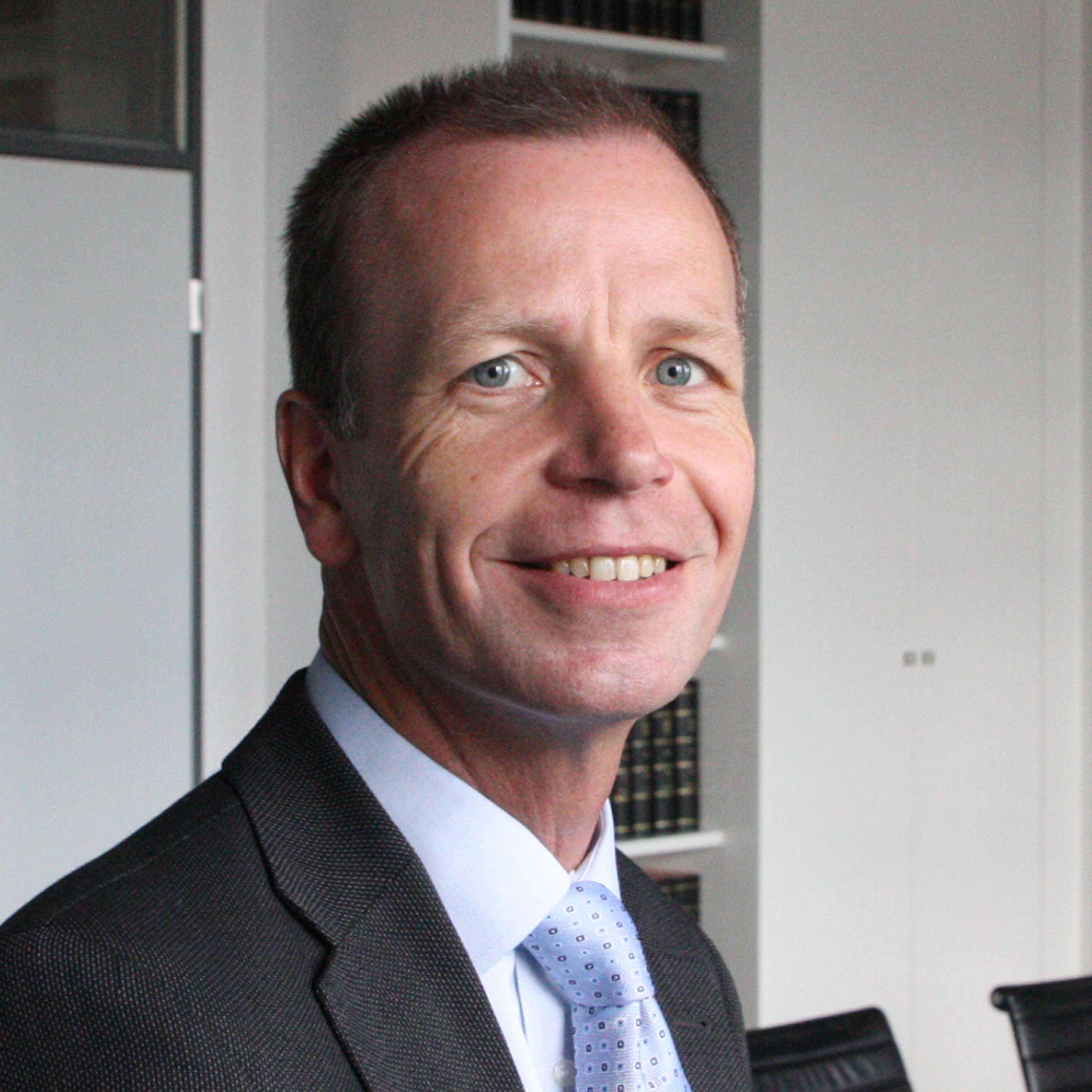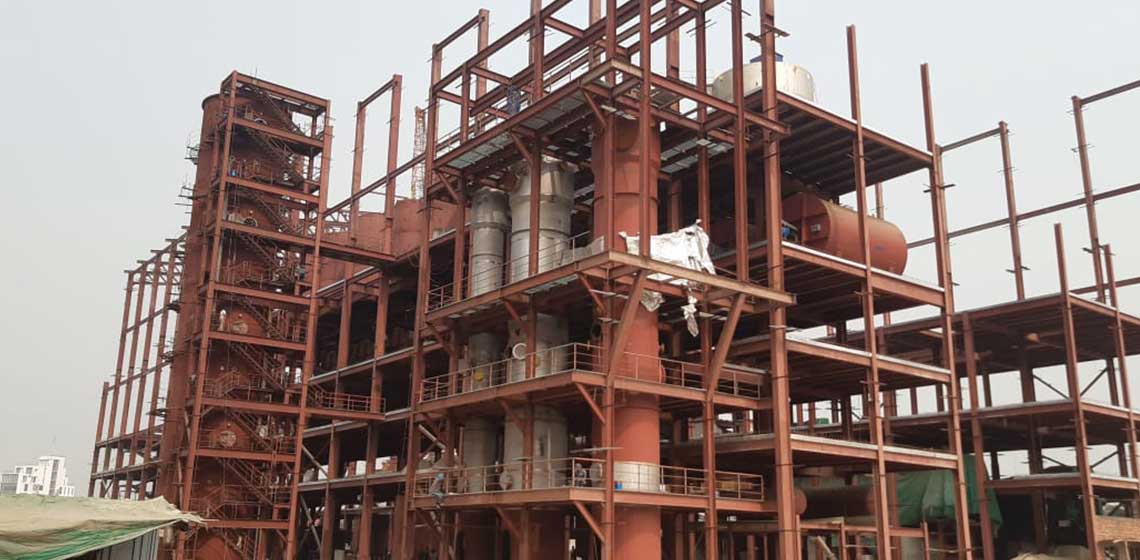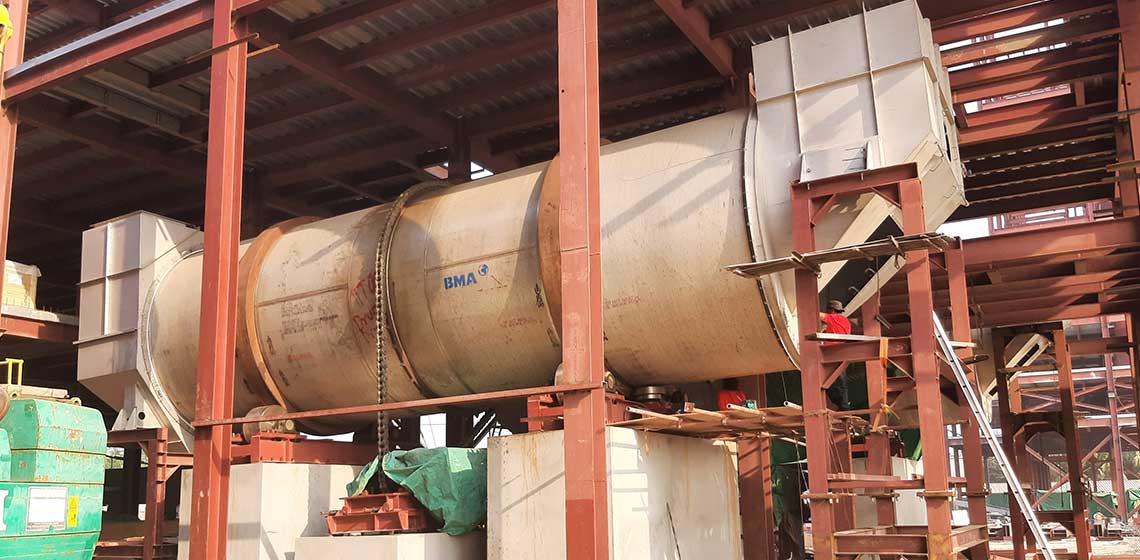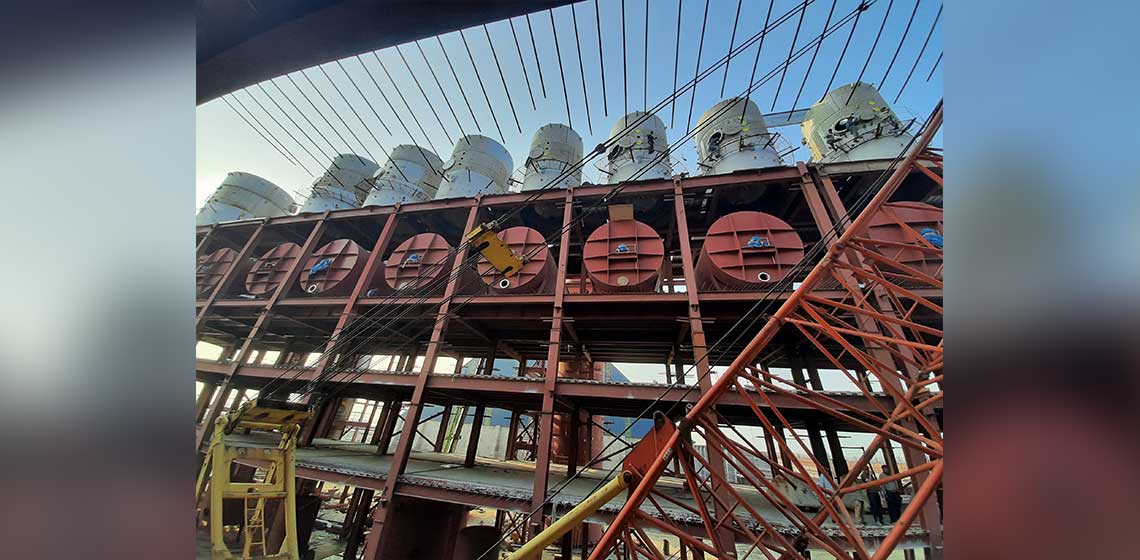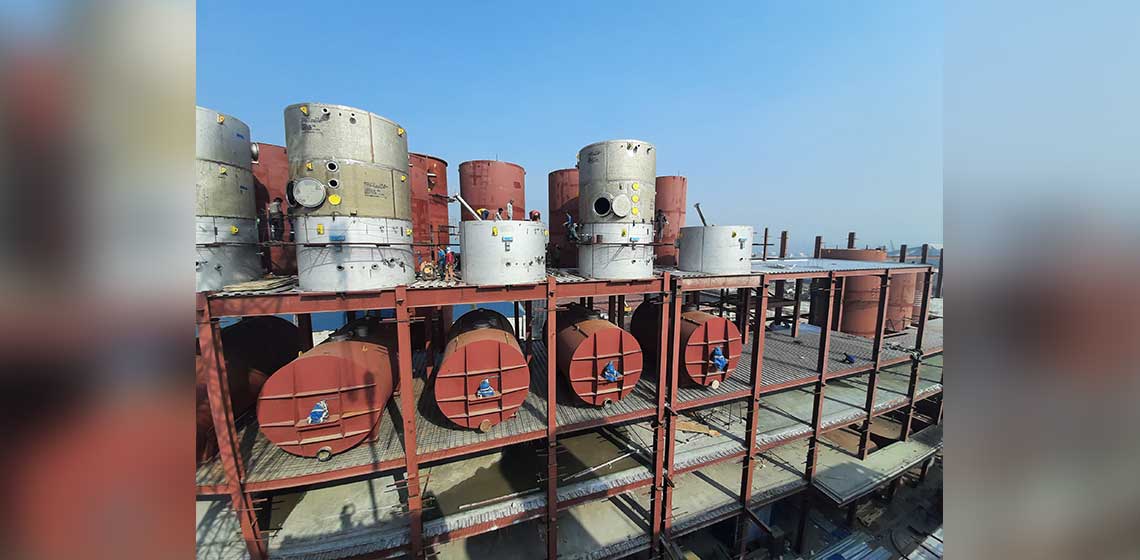Engineering, the supply of machinery and equipment, assembly supervision and commissioning: BMA is in charge of much of the work involved in the construction of the new 3,000 tpd sugar refinery for Dhaka Sugar. The roofs of the buildings are in place and the large plants have been installed – in time for the start of the rainy season in Bangladesh.
Dhaka Sugar refinery taking shape
BMA in charge of engineering, equipment and commissioning
Dhaka Sugar refinery: construction in full swing
In mid-2021, BMA shipped the first items of equipment for the new Dhaka Sugar refinery from Bremen, Germany, to Bangladesh. While piping and electrical engineering work was still ongoing, assembly of the equipment started in September. Since then, construction of the new Dhaka Sugar refinery has been progressing steadily.
Equipment: assembly overseen by BMA site supervisor
Two raw sugar stores, the process building and another building for sugar packaging are already complete. Overseen by the BMA site supervisor, suitable foundations are cast, the individual items assembled, and the equipment arranged exactly as intended in the concept from BMA.
Installation of juice purification and filtration systems and more
In addition to equipment from BMA, operation of the refinery also requires many different components from other suppliers, ranging from pumps to heat exchangers and conveyor systems, and to complete stations. Among them juice purification and filtration, and the plant for packaging refined sugar into 50 kg bags.
All of these have by now been delivered. In the next few weeks, BMA will receive help from the other suppliers’ site supervisors, who will oversee installation and commissioning of their own systems. While one of the two new raw sugar stores serves for pre-assembly of the equipment, the other store is already filled with raw sugar.
Dhaka Sugar refinery: roof in place
In May, rainfall in Bangladesh rises sharply. The rainy season lasts until September, and outdoor work is therefore quite difficult during this period. This is why the heavy equipment had to be installed early using large cranes, so the roofs of the refinery buildings could be put in place in time.
Thanks to the excellent collaboration between all parties, this challenging task was successfully completed.
